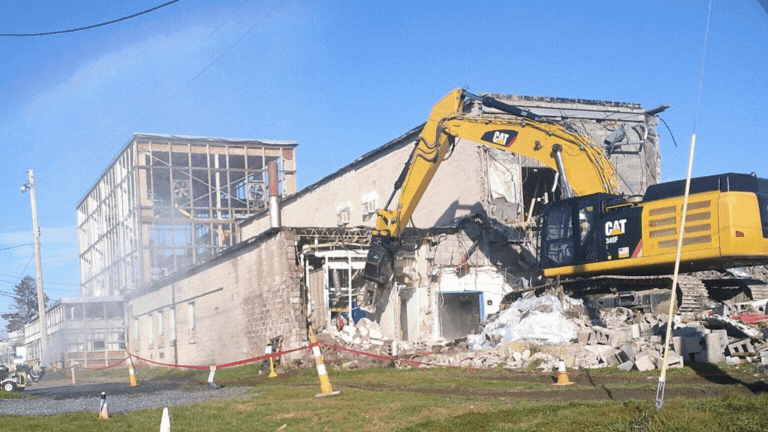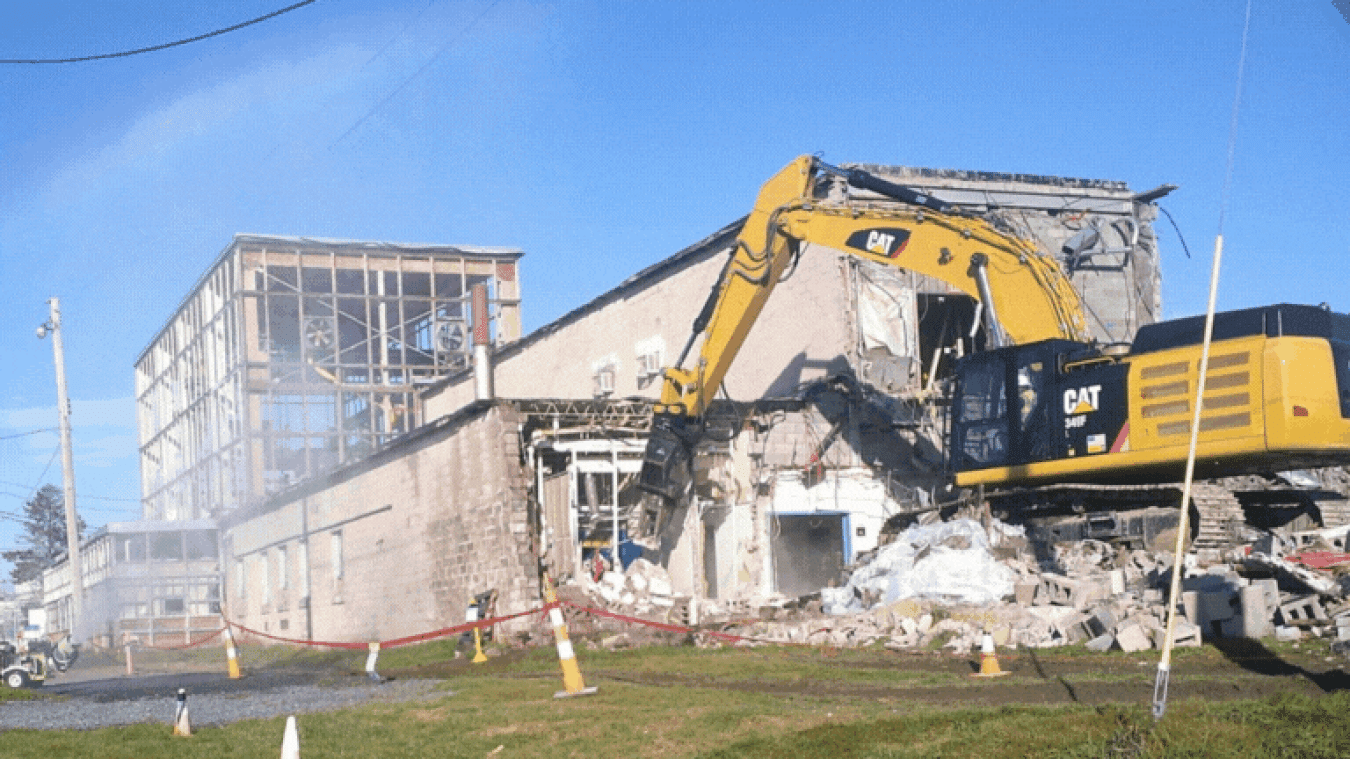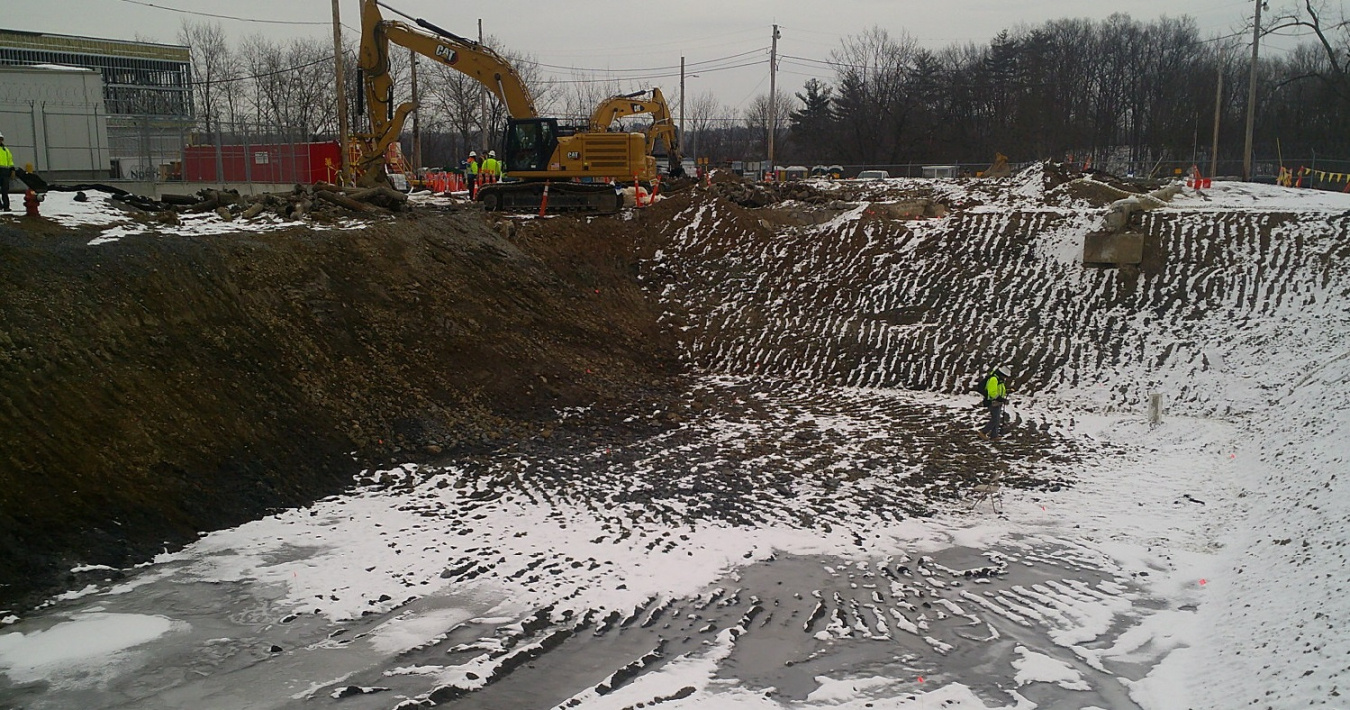U.S. Department of Energy Office of Environmental Management crews demolished seven structures that make up the Q-Complex at the Knolls Atomic Power Laboratory and returned the restored site to the Office of Naval Reactors for redevelopment. November 18, 2025
Office of Environmental Management
November 18, 2025Before and after: The first photo shows the demolition of Building Q4. Built in 1951, Building Q4 was the oldest of the Q-Complex buildings at Knolls Atomic Power Laboratory. The second photo shows the restored Q-Complex site that the U.S. Department of Energy Office of Environmental Management returned to the Office of Naval Reactors this past summer for future mission use.
EM successfully completed deactivation, decommissioning and removal of the Q-Complex at the Knolls Atomic Power Laboratory as part of a broader agreement with the Office of Naval Reactors to support cleanup of legacy environmental liabilities across Naval Nuclear Laboratory sites.
NISKAYUNA, N.Y. — U.S. Department of Energy Office of Environmental Management (EM) crews demolished seven structures that make up the Q-Complex at the Knolls Atomic Power Laboratory and returned the restored site to the Office of Naval Reactors for redevelopment.
“EM is honored to assist Naval Reactors with transforming legacy facilities like the Q-Complex into opportunities in support of Naval Reactor’s critical national security mission,” said Marty Krentz, federal project director of the EM Consolidated Business Center (EMCBC) New York Project Support Office.
The EMCBC-New York Project Support Office and contractor North Wind Site Services safely completed the demolition, remediation and restoration of the complex this past summer. The project began in 2023.
The Q-Complex at the Knolls Atomic Power Laboratory included seven buildings, several which were used to support reactor component assembly and testing, prototype assemblies and mock-ups, and storage of clad uranium fuel. Later uses of these buildings included laboratory, radiological training and office space, and general storage.
Below-grade remediation of the Q-Complex footprint required removal of concrete slabs, concrete and treated-wood piers, concrete pits, contaminated soil and piping, and several obsolete utility systems.
U.S. Department of Energy Office of Environmental Management crews removed about 15,000 cubic yards of material from the Q-Complex footprint as part of below-grade remediation.
It was the first cleanup project to be completed under an agreement between EM and the Office of Naval Reactors. The agreement tasks EM with performing deactivation, decommissioning, removal and remediation of legacy environmental liabilities at Naval Nuclear Laboratory sites.
The EM crews tore down buildings originally used to support reactor component assembly and testing, prototype assemblies and mock-ups, and storage of clad uranium fuel. Later uses of these buildings included laboratory, radiological training and office space, and general storage.
Below-grade remediation of the complex footprint required team members to remove concrete slabs, concrete and treated-wood piers, concrete pits, contaminated piping and several obsolete utility systems. They removed about 15,000 cubic yards of material — enough to fill an estimated 1,250 large dump trucks — for disposal in approved regulated waste facilities.
-Contributor: Stephanie Shewmon
To receive the latest news and updates about the Office of Environmental Management, submit your e-mail address.





